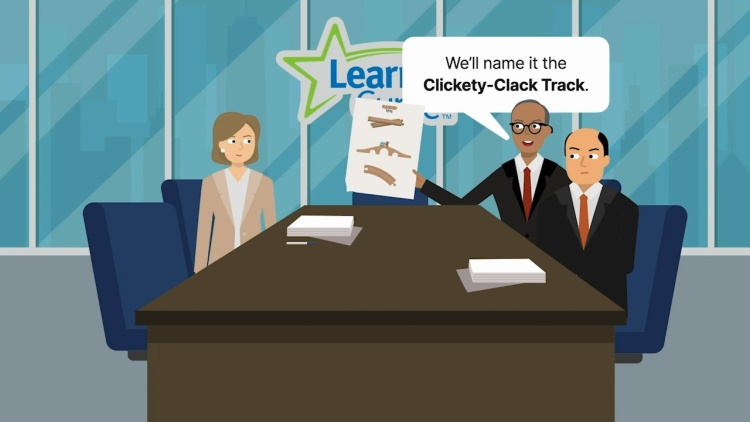Learning Curve Toys, Inc. v. PlayWood Toys, Inc.
United States Court of Appeals for the Seventh Circuit
342 F.3d 714 (2003)
- Written by Lauren Petersen, JD
Facts
Robert Clausi and Scott Moore owned a two-man company called PlayWood Toys, Inc. (PlayWood) (plaintiff). PlayWood made wooden children’s toys. Learning Curve Toys, Inc. (Learning Curve) (defendant) was a large toy company. Learning Curve met with Clausi and Moore about possibly having PlayWood manufacture some of Learning Curve’s toys. Learning Curve said it was going to show PlayWood some toy designs on a confidential basis. Clausi and Moore responded that they, too, had some confidential ideas to share. Learning Curve complained that it had been unable to make its wooden train-track product stand out. Clausi had an idea and cut grooves into one of Learning Curve’s track samples. Now, running a train over the track made a realistic clickety-clack sound. Clausi said that if he manufactured the track, he would call it “Clickety-Clack Track.” Clausi gave the sample grooved track piece to Learning Curve. Ultimately, PlayWood did not receive a manufacturing contract from Learning Curve. Nearly two years later, PlayWood discovered that Learning Curve was selling grooved wooden train tracks under the name “Clickety-Clack Track.” Learning Curve made more than $20 million in the first six years of track sales. PlayWood accused Learning Curve of stealing its track design, and a jury found that Learning Curve had misappropriated, or stolen, PlayWood’s trade secret. However, the district court held that PlayWood did not have a protectable trade secret in the clickety-clack track, and granted judgment as a matter of law to Learning Curve. PlayWood appealed.
Rule of Law
Issue
Holding and Reasoning (Ripple, J.)
What to do next…
Here's why 899,000 law students have relied on our case briefs:
- Written by law professors and practitioners, not other law students. 47,000 briefs, keyed to 994 casebooks. Top-notch customer support.
- The right amount of information, includes the facts, issues, rule of law, holding and reasoning, and any concurrences and dissents.
- Access in your classes, works on your mobile and tablet. Massive library of related video lessons and high quality multiple-choice questions.
- Easy to use, uniform format for every case brief. Written in plain English, not in legalese. Our briefs summarize and simplify; they don’t just repeat the court’s language.





